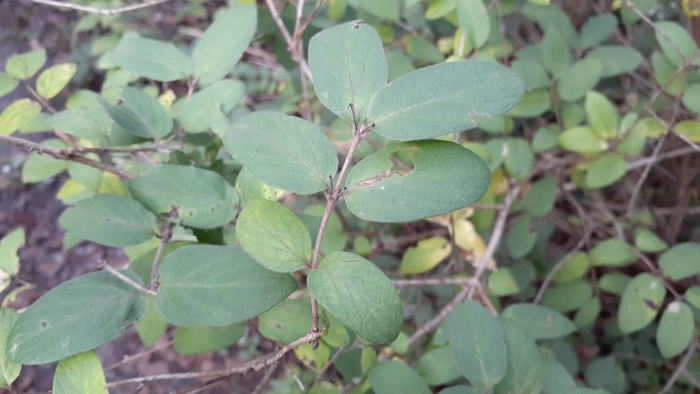Fly Woodbine
(Lonicera ×xylosteoides)
Fly Woodbine (Lonicera ×xylosteoides)
/
/

© Quinten Wiegersma
CC BY 4.0
Image By:
© Quinten Wiegersma
Recorded By:
Copyright:
CC BY 4.0
Copyright Notice:
Photo by: © Quinten Wiegersma | License Type: CC BY 4.0 | License URL: http://creativecommons.org/licenses/by/4.0/ | Uploader: birds_bugs_botany | Publisher: iNaturalist |






Estimated Native Range
Summary
Lonicera ×xylosteoides, commonly known as Fly Woodbine, is a deciduous hybrid shrub resulting from the cross between Lonicera tatarica and Lonicera xylosteum. It is native to a range of habitats including forest edges and clearings, as well as shrublands in Europe and Asia. This shrub typically grows to a height of 6-10 feet (1.8-3 meters) with a similar spread, and it forms a bushy, rounded shape. The leaves are simple, opposite, and have a slightly blue-green hue. Fly Woodbine produces small, tubular flowers that are creamy white to yellow, blooming in late spring to early summer. The flowers are modestly showy and are followed by red or orange berries that can be attractive to birds.
Fly Woodbine is appreciated for its ease of maintenance and its ability to thrive in a variety of soil conditions, though it prefers well-drained soils. It is often used in garden borders, as a screen or hedge, and in wildlife gardens to attract birds. This shrub tolerates partial shade but flowers best in full sun. It is generally resistant to pests and diseases, but can be susceptible to powdery mildew. Fly Woodbine is not known for aggressive roots or significant invasiveness, but its berries may spread seedlings if not managed.CC BY-SA 4.0
Fly Woodbine is appreciated for its ease of maintenance and its ability to thrive in a variety of soil conditions, though it prefers well-drained soils. It is often used in garden borders, as a screen or hedge, and in wildlife gardens to attract birds. This shrub tolerates partial shade but flowers best in full sun. It is generally resistant to pests and diseases, but can be susceptible to powdery mildew. Fly Woodbine is not known for aggressive roots or significant invasiveness, but its berries may spread seedlings if not managed.CC BY-SA 4.0
Plant Description
- Plant Type: Shrub
- Height: 3-6 feet
- Width: 3-6 feet
- Growth Rate: Moderate
- Flower Color: Yellow, Cream
- Flowering Season: Spring
- Leaf Retention: Deciduous
Growth Requirements
- Sun: Full Sun, Part Shade
- Water: Medium
- Drainage: Medium
Common Uses
Bird Garden, Butterfly Garden, Low Maintenance
Natural Habitat
Forest edges, clearings, and shrublands in Europe and Asia
Other Names
Common Names:
Scientific Names: , Lonicera ×xylosteoides, Caprifolium ×coerulescens, Lonicera ×coerulescens, Lonicera ×micranthoides, Lonicera ×nepalensis,
GBIF Accepted Name: